#aegisuchus
Text

Maysozoic #16: Aegisuchus
96 notes
·
View notes
Text
#Maysozoic Day 16 - Aegisuchus
okay.... 3 days to go..... but yeah i actually dont like drawing pseudosuchians that much lmfao
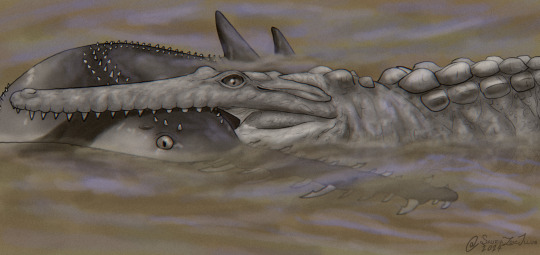
here's the prompt list:
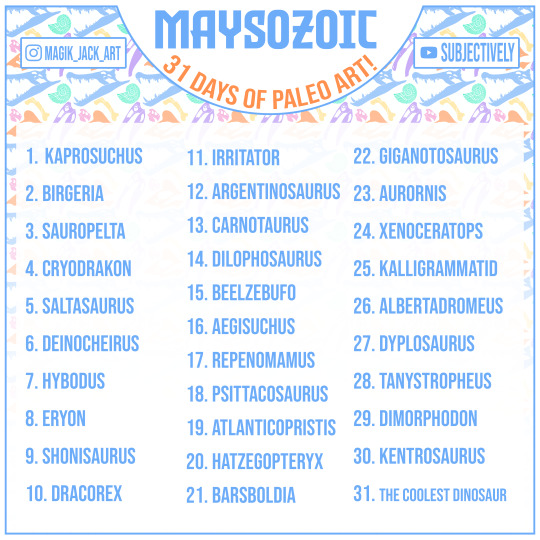
#Maysozoic#paleoart#paleontology#digital art#artists on tumblr#digital artwork#palaeoart#digital illustration#sciart#id in alt text#paleoblr#palaeoblr#crocodilian#fish#fish art#extinct fish art#Aegisuchus#Onchopristis
61 notes
·
View notes
Text
crap crap crap crap crap crap crap crap crap crap crap crap crap crap crap crap crap crap crap crap crap crap crap crap crap crap crap crap crap crap crap crap crap crap crap crap crap crap crap crap crap crap crap crap crap crap crap crap crap crap crap crap crap crap crap crap crap crap crap crap crap crap crap crap crap
Welcome to Day 16 MaySozoic with Aegisuchus the child eater
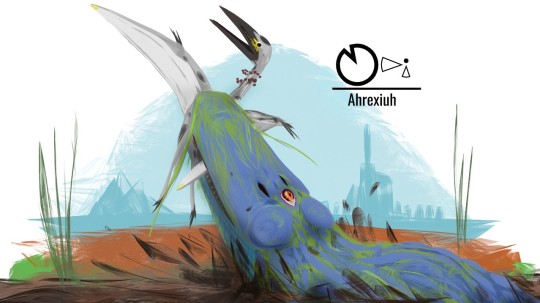

and uh Day 17 with Repenomamaus
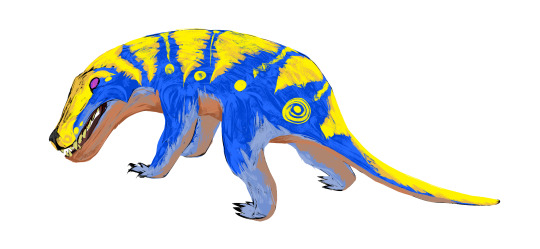
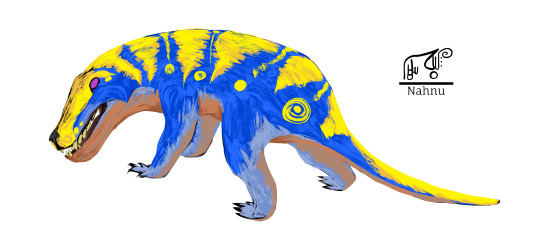
#artwork#digital art#art#mouserrouser#monster#dinosaur#paleontology#paleoart#cretaceous period#dino#monster art#maysozoic#crocodile#aegisuchus#african animals#chinese animals#mammal#prehistoric mammals#ugly bastard#cyclops#child eating#repenomamaus
16 notes
·
View notes
Text

Maysozoic day 16:
An attempted picture of aegisuchus but it ended up being eaten by an afrotapejara
16 notes
·
View notes
Text


Maysozoic: Day 16
Front facing Aegisuchus
5 notes
·
View notes
Text
Another two for one, my friends!



1 note
·
View note
Text

#Maysozoic Day 16 - Aegisuchus
More.
Support me here
Buy some prints
27 notes
·
View notes
Text
day 16 dont have aegisuchus so ill use other crocodylomorphs
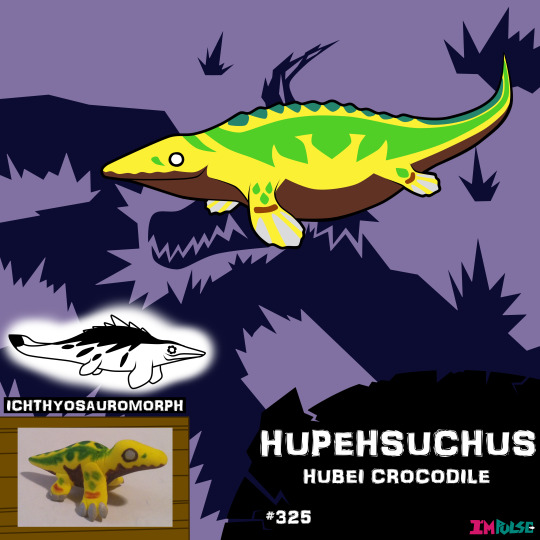

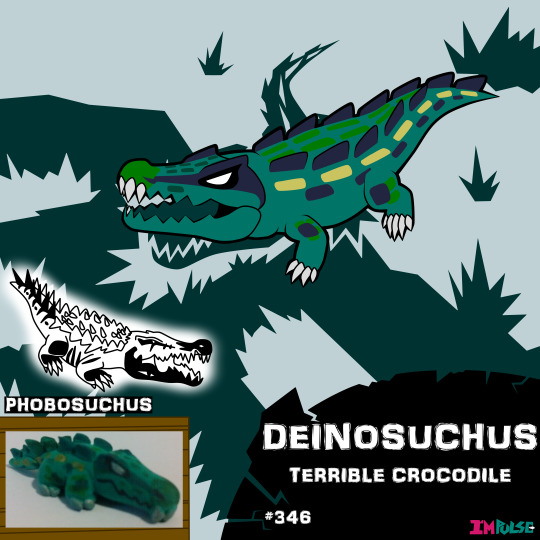
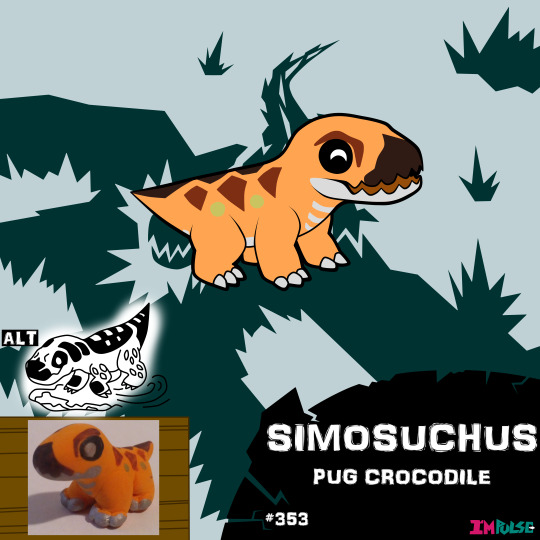
#my art#paleo art#paleoart#crocodylomorph#hupehsuchus#armadillosuchus#deinosuchus#simosuchus#maysozoic#paleolites
16 notes
·
View notes
Text
crocodile evolution

the jurassic period.
during the middle mesozoic era called the jurassic era some dinosaures evolved into new species, including birds and crocodiles. the earliest crocs were small, terrestrial, two-legged sprinters, and many were vegetearian. this has changed massivley comparing them to modern day crocs.
as the era progressed they migrated to the water and sea, developing elongated bodies, spalyed limbs and narrow flat tooth studded snouts with powerful jaws. the image describing these crocs looks like a cute little harmless creature which they might have been but have been evolved massivley to present day.

The Cretaceous Period
The final part of the Mesozoic Era, the Cretaceous Period, began about 145 million years ago and lasted until about 65 million years ago. It was during this final epic that the modern crocodile, Crocodylidae, first appeared as a distinct species and flourished.
As the Cretaceous Period drew to a close, the number of crocodile species began to dwindle. Deinosuchus and its offspring grew smaller over the centuries, evolving into caimans and alligators. Crocodylidae evolved into the modern crocodile and spawned several species now extinct. these creatures here look much smaller and nippy, and much more sweeter and harmless than the modernday croc.

Aegisuchus
Aegisuchus, was a giant, river-dwelling crocodile of middle Cretaceous northern Africa. Judging by the size of its single, partial fossilized snout, Aegisuchus may have rivaled Sarcosuchus in size, full-grown adults measuring at least 50 feet from head to tail (and possibly as much as 70 feet, depending on whose estimates you rely on).
One odd fact about Aegisuchus is that it lived in a part of the world not generally known for its abundant wildlife. However, 100 million years ago, the stretch of northern Africa now dominated by the Sahara Desert was a green, lush landscape threaded with numerous rivers and populated by dinosaurs. this drawing looks highly unrealistic with ists small beady eyes and long mouth and jaw.

Anatosuchus
Not literally a cross between a duck and a crocodile, Anatosuchus, the DuckCroc, was an unusually small (only about two feet from head to tail) ancestral crocodile equipped with a broad, flat snout--similar to those sported by the contemporary hadrosaurs (duck-billed dinosaurs) of its African habitat. Described in 2003 by the ubiquitous American paleontologist Paul Sereno, Anatosuchus probably kept well out of the way of the larger megafauna of its day, rousting small insects and crustaceans from the soil with its sensitive "bill." these are much smaller creatures compared to some of the others, and looks very much like a duck with its legs and mouth.
0 notes
Text
Crocs like any other species got there start somewhere yet have ironically among most species changed the least comparatively to a lot of other ancient ancestors.
the species started out as an offshoot of the Archosaurs the lizards one of the lizard species that existed even before the dinos, many of the defining attributes of the species, starting her being there defined jaw shape and it’s impressive strength stuff that’s still a defining all these years later to these blood hungry lake griefers, there were aspects that were lost though such as standing up right and having a herbivore diet which evolution clearly agrees is counterproductive when you have a jawline that’s made out of razorblades, as such the species later attained there more known features of more stubby legs for better amoured scale and better suiting themselves to go spawn camp rivers with there preference for marine habitats
let’s name a few species from the document I’m using to create this list
Aegisuchus

Charles P. Tsai/Wikimedia Commons/CC BY 2.5
Name: Aegisuchus (Greek for "shield crocodile"); pronounced AY-gih-SOO-kuss; also known as the ShieldCroc
Habitat: Rivers of northern Africa
Historical Period: Middle Cretaceous (100-95 million years ago)
Size and Weight: About 50 feet long and 10 tons
Diet: Fish and small dinosaurs
Distinguishing Characteristics: Large size; broad, flat snout
The latest in a long line of giant prehistoric "crocs," including SuperCroc (aka Sarcosuchus) and BoarCroc (aka Kaprosuchus), the ShieldCroc, also known as Aegisuchus, was a giant, river-dwelling crocodile of middle Cretaceous northern Africa. Judging by the size of its single, partial fossilized snout, Aegisuchus may have rivaled Sarcosuchus in size, full-grown adults measuring at least 50 feet from head to tail (and possibly as much as 70 feet, depending on whose estimates you rely on).
One odd fact about Aegisuchus is that it lived in a part of the world not generally known for its abundant wildlife. However, 100 million years ago, the stretch of northern Africa now dominated by the Sahara Desert was a green, lush landscape threaded with numerous rivers and populated by dinosaurs, crocodiles, pterosaurs and even small mammals. There's still a lot about Aegisuchus that we don't know, but it's reasonable to infer that it was a classic crocodilian "ambush predator" that subsisted on small dinosaurs as well as fish

Aegisuchus
Charles P. Tsai/Wikimedia Commons/CC BY 2.5
Name: Aegisuchus (Greek for "shield crocodile"); pronounced AY-gih-SOO-kuss; also known as the ShieldCroc
Habitat: Rivers of northern Africa
Historical Period: Middle Cretaceous (100-95 million years ago)
Size and Weight: About 50 feet long and 10 tons
Diet: Fish and small dinosaurs
Distinguishing Characteristics: Large size; broad, flat snout
The latest in a long line of giant prehistoric "crocs," including SuperCroc (aka Sarcosuchus) and BoarCroc (aka Kaprosuchus), the ShieldCroc, also known as Aegisuchus, was a giant, river-dwelling crocodile of middle Cretaceous northern Africa. Judging by the size of its single, partial fossilized snout, Aegisuchus may have rivaled Sarcosuchus in size, full-grown adults measuring at least 50 feet from head to tail (and possibly as much as 70 feet, depending on whose estimates you rely on).
One odd fact about Aegisuchus is that it lived in a part of the world not generally known for its abundant wildlife. However, 100 million years ago, the stretch of northern Africa now dominated by the Sahara Desert was a green, lush landscape threaded with numerous rivers and populated by dinosaurs, crocodiles, pterosaurs and even small mammals. There's still a lot about Aegisuchus that we don't know, but it's reasonable to infer that it was a classic crocodilian "ambush predator" that subsisted on small dinosaurs as well as fish.
Strauss, B. (2019) Prehistoric crocodile evolution, ThoughtCo. ThoughtCo. Available at: https://www.thoughtco.com/prehistoric-crocodile-profile-4047616#:~:text=During%20the%20middle%20Mesozoic%20Era,sprinters%2C%20and%20many%20were%20vegetarian. (Accessed: February 15, 2023).
Strauss, B. (2019) Before the dinosaurs, these reptiles ruled the Earth, ThoughtCo. ThoughtCo. Available at: https://www.thoughtco.com/reptiles-that-ruled-earth-before-dinosaurs-1093310 (Accessed: February 15, 2023).
0 notes
Photo

Weird Heads Month #22: Flat Headed Crocs
The heads of modern crocodilians are already pretty amazing, with their high-set eyes and nostrils, moveable ear flaps, numerous dermal pressure receptors, and a distinctive chaotic "scaly" surface texture that's actually formed from cracks in thick stiff skin.
And back during the Late Cretaceous of West Africa, about 95 million years ago, there was a huge variety of odd-looking crocdyliformes all sharing a river delta environment and specializing in different ecological niches from terrestrial to aquatic. There were species with nicknames like "duck croc", "boar croc", and "pancake croc" – but one of the most intriguing of them all was Aegisuchus witmeri, the "shieldcroc".
Known only from the back end of its skull, Aegisuchus seems to have had a very wide and flat head, possibly similar in shape to those of the "pancake crocs" which it may have been closely related to. From the sheer size of the known remains it must have been rather big, with a skull at least 2m long (6'6") and a total length of around 10m (32'10").
But its weirdest feature was a raised circular bony boss in the middle of its forehead. Unlike any other known croc, the bone around this area shows evidence of deep blood vessel channels, suggesting it was anchoring a more extensive keratinous "shield". Much like the "horns" seen on some crocodilian species this was probably used for territorial and mating displays, but its extensive blood supply may have also allowed it to play a role in body temperature regulation.
Aegisuchus would have had a fairly weak bite, and may have fed more like a pelican than a modern croc, snapping up fish and other small animals with its gaping mouth. Its jaw mechanics also resembled those of the Triassic amphibian Gerrothorax's "toilet seat head", so it could have had a similar hunting strategy, laying motionless on riverbeds with its mouth wide open, waiting for prey to swim close enough to catch.

———
Nix Illustration | Tumblr | Pillowfort | Twitter | Patreon
#weird heads 2020#science illustration#paleontology#paleoart#palaeoblr#aegisuchus#aegyptosuchidae#crocodyliformes#crocodylomorph#pseudosuchia#croc-line archosaurs#archosaur#art#flatcroc#shieldcroc#pancake croc
497 notes
·
View notes
Photo

These indeterminant crocodyliform scutes are not only incorrectly being identified as Aegisuchus, but the size of Aegisuchus (=Laganosuchus) is being inflated to 15 meters (actually closer to 4-6 m). Beware of snake oil salesmen who are willing to tell you anything to get you to buy their product.
9 notes
·
View notes
Photo
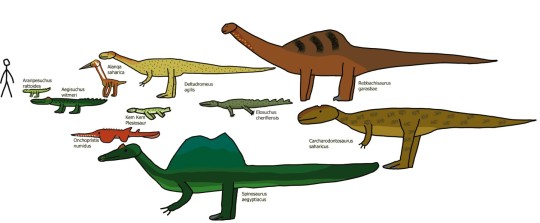
Fauna of the Kem Kem Beds
#araripesuchus#aegisuchus#alanqa#deltadromaeus#rebbachisaurus#onchopristis#elosuchus#carcharodontosaurus#spinosaurus#kem kem
3 notes
·
View notes